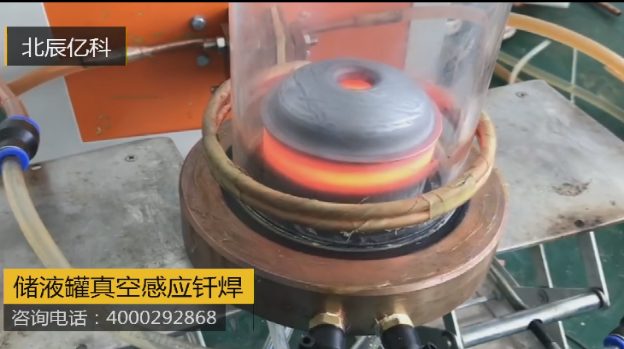Technology Exchange
Vacuum induction brazing
When metals are heated to high temperatures under normal circumstances, oxygen in the air will oxidize the surface of the metal and form oxide scales. The presence of oxides hinders the brazing process, in order to eliminate oxides and clean the surface of the parts. In the process of brazing, we can avoid oxidation by using additives, vacuum brazing, and gas shielded welding. In "How to Prevent Welding Oxidation 1", we focused on gas shielded welding. Today we will take a look at vacuum high-frequency brazing.
What is vacuum brazing?
Vacuum brazing is a method of brazing in a vacuum environment without using flux. The brazing principle is to melt the solder whose liquidus temperature is lower than the solidus temperature of the parent material by heating the parts and the solder. Use liquid solder to wet the base material, fill the joint gap and dissolve and diffuse with the base material to connect the parts.
Application areas of vacuum brazing
Because of the beautiful appearance, good mechanical properties, and good corrosion resistance of vacuum brazed parts, they were widely used in the aerospace field at first, and gradually applied to civilian products with the development of technology. Especially the high-speed development of the home appliance industry (especially the refrigeration industry, including refrigeration equipment, such as refrigerators, air conditioners and their three-way, four-way valves, etc.), the automotive industry, and the electronics industry, and the application of brazing technology is becoming more and more extensive .
Vacuum brazing process
The technological process of vacuum brazing is: preparation of parts before brazing, assembly and positioning of parts, filling of brazing filler metal, vacuuming, vacuum brazing, and heat dissipation after welding.
Advantages of vacuum brazing
Compared with fusion welding and other types of brazing, vacuum brazing tools mainly have the following advantages: in the entire brazing process, no flux is used, and the brazed parts are under vacuum conditions, and there will be no oxidation, carbon increase, and Decarburization, pollution, deterioration and other phenomena, the brazing seam is beautifully formed.
What is vacuum induction brazing?
Vacuum induction brazing, as the name implies, is a process in which induction brazing is used for welding in a vacuum environment. Compared with brazing in a vacuum furnace, vacuum induction brazing has the characteristics of low equipment investment cost, low use cost, convenient and flexible production, etc. It is especially suitable for the brazing of small and medium batches of parts with multiple specifications.
Case Sharing of Vacuum Brazing of Liquid Tank

Project experience summary
· The surface of the parts to be welded needs to be prepared first, and all surfaces should be clean surfaces with no oxide skin and no oil stains that have been machined, sand blown or chemically cleaned.
· For the assembly and positioning of the parts, the parts should be able to maintain the correct positional relationship and brazing gap, or the brazing gap can be closed after the solder is melted.
· During vacuum brazing, the solder must be pre-added and placed. According to different conditions, different solder forms such as powder, flake, and wire can be used.
· The complexity of vacuum induction brazing requires higher accuracy of the induction heating power supply. If the heating accuracy is not enough, the brazing process is not perfect, it will lead to low product welding quality.
· A series of problems such as the tightness of the vacuum device, the degree of vacuum, how to cool down, and when can the parts be taken out, will cause welding failure.
For more information, please call: 4000292868


 Scan and follow!
Scan and follow!